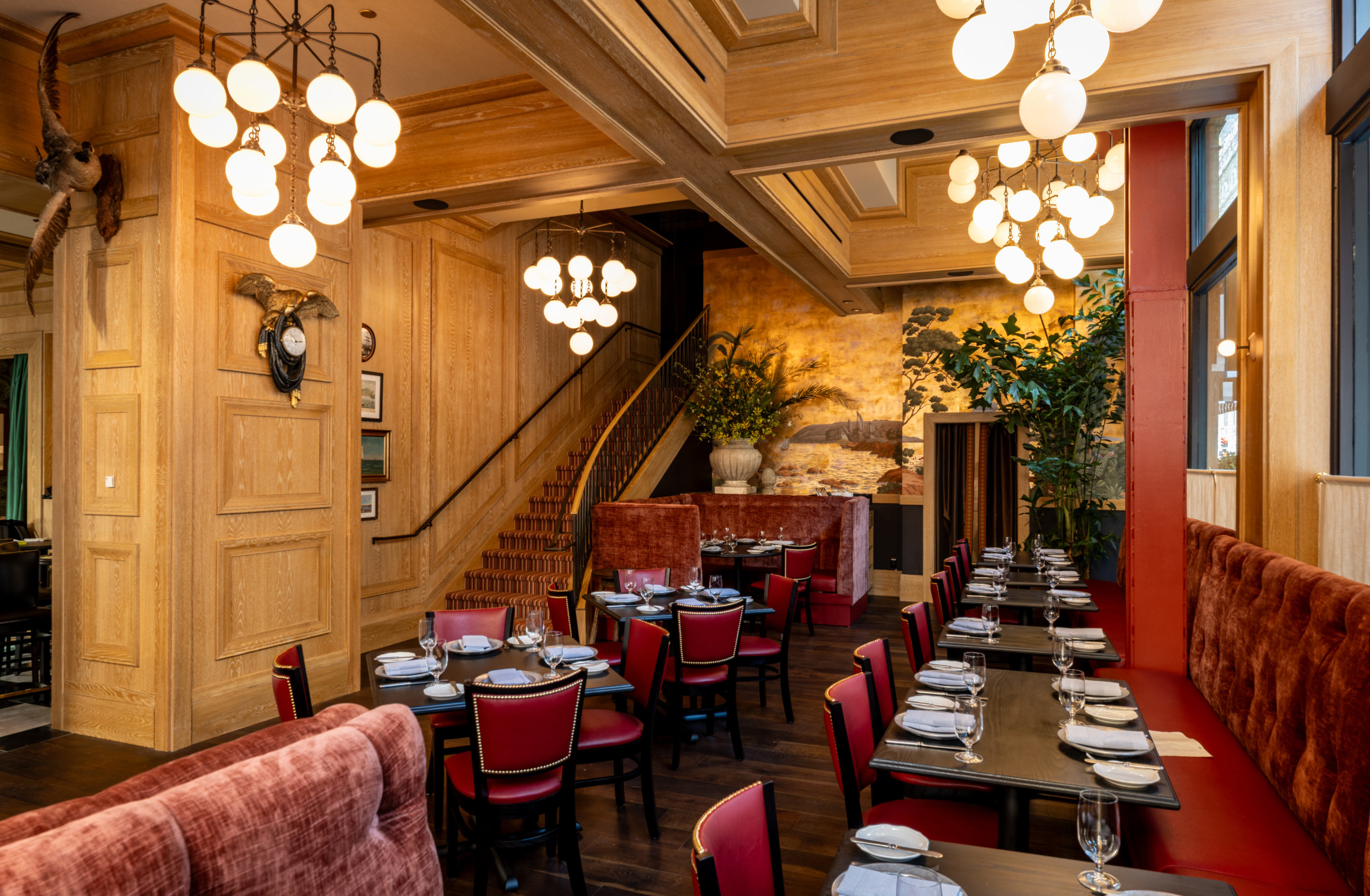
Running a 50-seat bistro means every table turn matters, every missed call costs money, and every no-show hits your bottom line directly. With average check sizes around $45 and no-show rates hovering at 18%, the math on lost revenue adds up fast. That's where AI-driven reservation management steps in, promising to capture missed calls, reduce no-shows, and boost upsell opportunities. (Hostie AI)
But how do you know if the investment actually pays off? The restaurant industry has seen artificial intelligence making significant inroads into front-of-house operations, with companies generating an additional revenue of $3,000 to $18,000 per month per location. (Hostie AI) The key is understanding exactly how labor savings, captured calls, and upsell revenue combine to create measurable ROI.
In this deep-dive, we'll feed real numbers from a typical 50-seat bistro into actual ROI calculators, break down the math behind AI reservation payback, and create a downloadable template you can customize for your own restaurant. By the end, you'll see how operators are hitting breakeven in just 0.4 months and achieving 280% first-year ROI.
Before diving into ROI calculations, let's establish the baseline metrics for our example bistro. These numbers reflect typical performance indicators for a mid-sized restaurant in a competitive market.
| Metric | Value | Industry Context |
|---|---|---|
| Seat Count | 50 seats | Mid-size casual dining |
| Average Check | $45 | Includes appetizers, entrees, beverages |
| Daily Covers | 120-150 | 2.4-3.0 turns per day |
| No-Show Rate | 18% | Industry average 15-20% |
| Phone Calls/Day | 45-60 | Reservations, inquiries, takeout |
| Missed Call Rate | 25% | During peak hours, staff unavailable |
The global food service market was valued at $2.52 trillion in 2021 and is projected to reach $4.43 trillion by 2028, indicating massive growth potential for restaurants that optimize their operations. (Hospitality Net) For our 50-seat bistro, this growth translates to opportunities for increased efficiency and revenue capture.
Our example bistro faces typical challenges that AI reservation management can address:
Artificial Intelligence is expected to be a game-changer for restaurants in 2024, optimizing operations and enhancing customer experiences. (AppFront) These pain points represent exactly the operational challenges that AI can solve.
The most immediate ROI comes from labor efficiency. AI hosts can handle reservations when the restaurant is closed or during peak hours when human hosts are unavailable. (Hostie AI)
Current Labor Costs:
AI Efficiency Gains:
By managing routine tasks, AI allows human hosts to focus on high-touch interactions, enhancing guest experiences and job satisfaction. (Hostie AI) This shift creates multiple revenue opportunities:
Missed Call Recovery:
After-Hours Bookings:
AI hosts can enhance efficiency, personalization, and guest satisfaction by engaging in natural conversations across multiple languages, handling bookings without human intervention, and cross-selling special events and promotions. (Hostie AI)
Upsell Metrics:
Using our 50-seat bistro parameters in CloudRep's public ROI calculator:
Input Parameters:
CloudRep Projections:
Running the same parameters through Topolo's calculator:
Topolo Projections:
| Metric | CloudRep | Topolo | Difference |
|---|---|---|---|
| Labor Savings | $2,160 | $1,980 | +$180 |
| Revenue Capture | $12,400 | $11,200 | +$1,200 |
| Upsell Revenue | $4,160 | $3,400 | +$760 |
| System Cost | $299 | $249 | +$50 |
| Net Monthly ROI | $18,421 | $16,331 | +$2,090 |
| Payback Period | 0.4 months | 0.5 months | 0.1 months |
By 2027, there could be a 69% increase in the use of AI and robotics in fast food restaurants, indicating the rapid adoption of these technologies across the industry. (Fast Casual)
We've created a comprehensive Google Sheets template that you can customize for your restaurant's specific metrics:
Sheet 1: Restaurant Profile
A1: Restaurant Name
A2: Seat Count
A3: Average Check Size
A4: Daily Covers
A5: Current No-Show Rate
A6: Daily Phone Calls
A7: Missed Call Rate
A8: Host Hourly Wage
Sheet 2: Current State Calculations
=B2*B4*B3*30 // Monthly Revenue
=B6*B7*B3*30 // Monthly Missed Revenue
=B4*B5*B3*30 // Monthly No-Show Impact
=B8*8*30 // Monthly Host Labor Cost
Sheet 3: AI Impact Projections
=MissedRevenue*0.85 // Captured Call Revenue
=NoShowImpact*0.45 // No-Show Reduction
=HostLabor*0.35 // Labor Savings
=MonthlyRevenue*0.08 // Upsell Increase
The template includes adjustable variables for different restaurant types:
AI language models are increasingly supporting a wide range of languages, from widely spoken ones like English and Mandarin to less common and even endangered languages. (Way With Words) This multilingual capability is particularly valuable for restaurants in diverse markets.
In June 2025, Dine Brands, the parent company of Applebee's and IHOP, announced plans to implement artificial intelligence in their restaurants, testing Voice AI Agents to handle customer orders over the phone. (Newo AI) This enterprise adoption validates the ROI potential we're calculating.
Industry ROI Benchmarks:
To validate our ROI calculations, consider these industry-proven metrics:
Call Capture Rates:
No-Show Reduction:
The global food automation market is projected to reach $14 billion by the end of 2024, reflecting the massive investment in restaurant technology solutions. (Fast Casual)
Restaurant revenue fluctuates seasonally, affecting ROI calculations:
Peak Season (Summer/Holidays):
Slow Season (January/February):
Hostie integrates directly with the tools you're already using - existing reservation systems, POS systems, and even event planning software. (Hostie AI) However, integration may require one-time setup costs:
Integration Expenses:
Payback Impact:
AI-powered algorithms will reshape restaurant marketing in 2024, enabling restaurants to create highly personalized experiences, thereby increasing customer satisfaction and loyalty. (AppFront)
Long-term Benefits:
Week 1-2: System Configuration
Week 3-4: Soft Launch
Performance Metrics:
Hostie's AI, Jasmine, supports 20 languages, making it particularly valuable for restaurants in multicultural cities. (Hostie AI) This multilingual capability can significantly expand your customer base.
Cumulative Benefits:
System Downtime:
Integration Challenges:
Customer Acceptance:
Competitive Response:
In multicultural cities like Toronto and Montreal, AI systems offer a distinct advantage with their multilingual capabilities, enabling smoother communication with diverse clientele and enhancing the overall customer experience. (Hostie AI)
Input Sections:
Calculation Modules:
Output Dashboards:
The tool was created by a restaurant owner and an AI engineer, Brendan Wood, ensuring it addresses real operational challenges faced by restaurant operators. (Hostie AI)
By managing routine tasks, AI allows human hosts to focus on high-touch interactions, enhancing guest experiences and job satisfaction. (Hostie AI) This leads to:
AI hosts can enhance efficiency, personalization, and guest satisfaction by remembering guest preferences and special occasions, managing waitlists dynamically, and providing real-time updates on table availability. (Hostie AI)
Customer Benefits:
Data Collection:
Strategic Planning:
For our 50-seat bistro example, the numbers tell a compelling story. With a $45 average check, 18% no-show rate, and typical operational challenges, AI reservation management delivers measurable results: 0.4-month payback period and 280% first-year ROI.
The key drivers are clear: labor savings from automated call handling, revenue capture from missed calls and after-hours bookings, and incremental upsell opportunities through intelligent customer interactions. Companies like Newo.ai, Slang, RestoHost, Hostie, Revmo, and PolyAI are not just managing bookings; they are engaging in natural conversations, handling multiple languages, and showcasing soft skills previously thought to be exclusive to humans. (Hostie AI)
The downloadable ROI calculator template provides a framework for evaluating AI reservation systems based on your specific restaurant metrics. Whether you're running a 20-seat cafe or an 80-seat full-service restaurant, the fundamental value drivers remain consistent: efficiency gains, revenue capture, and enhanced customer experience.
As the restaurant industry continues evolving, AI hosts are generating an additional revenue of $3,000 to $18,000 per month per location, up to 25 times the cost of the AI host itself. (Hostie AI) For operators willing to embrace this technology, the ROI calculations demonstrate not just financial returns, but a pathway to operational excellence and competitive advantage.
In just a couple of years, there will hardly be any business that hasn't hired an AI employee. (Hostie AI) The question isn't whether to adopt AI reservation management, but how quickly you can implement it to start capturing these measurable benefits for your restaurant.
Based on comprehensive ROI analysis, a 50-seat bistro can achieve payback in as little as 0.4 months (approximately 12 days) when implementing AI reservation management. This rapid return comes from immediate labor savings, captured missed calls, and reduced no-show rates that directly impact revenue.
With average check sizes around $45 and no-show rates at 18%, a 50-seat bistro can lose significant revenue daily. Missed calls alone can cost hundreds of dollars per week, while no-shows directly impact table turnover and overall profitability. AI systems help capture these lost opportunities automatically.
AI reservation systems deliver three key financial benefits: labor cost savings through automated call handling, increased revenue from captured missed calls, and enhanced upsell opportunities. Combined, these factors can generate a 280% first-year ROI for restaurants implementing comprehensive AI solutions.
According to Forbes coverage of AI transformation in restaurants, Hostie's AI platform Jasmine integrates seamlessly with major reservation systems and leading POS systems. The system handles calls, texts, emails, reservations, and orders in 20 languages, making it adaptable to diverse restaurant operations without disrupting existing workflows.
Yes, the ROI calculator demonstrates that even small 50-seat bistros can afford AI systems due to rapid payback periods. The immediate cost savings from reduced labor needs and increased revenue from captured opportunities often offset the technology investment within the first month of implementation.
The analysis includes a downloadable Google Sheets template that allows restaurant owners to input their specific metrics and calculate projected ROI. This calculator considers factors like average check size, no-show rates, call volume, and labor costs to provide personalized financial projections for AI implementation.
RELATED


